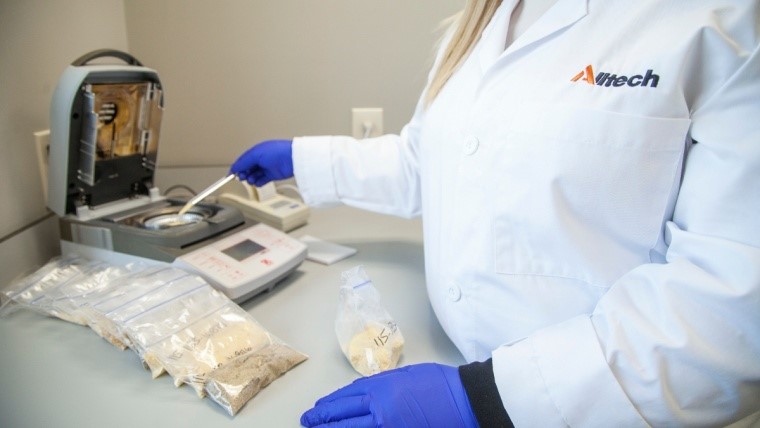- Nutrition & Health
- Dairy Health and Nutrition
- Swine Health and Nutrition
- Poultry Health and Nutrition
- Beef Health and Nutrition
Alltech 2018 harvest analysis finds highest levels of risk from DON, fusaric acid and fumonisin in Europe.
January 9, 2019

Mycotoxins are a concern for livestock producers around the world, as they have toxic properties that affect feed quality as well as animal health and performance.
Harvest samples from across Europe submitted to the Alltech 37+ mycotoxin analytical services laboratory in 2018 show high levels of mycotoxins, particularly deoxynivalenol (DON), fusaric acid and fumonisin in areas where there was excessive rainfall during flowering and pollination or late-season rain after heat and drought stress, the company said in an announcement. This situation occurred for grains and forages alike.
“Mycotoxins thrive in changeable conditions, with lack of rain, excessive rainfall or, sometimes, one after the other causing a perfect storm of contamination,” said Dr. Max Hawkins, global technical support with the Alltech Mycotoxin Management team. “The extreme weather events that we’ve seen this year around the world have led to an increased occurrence of mycotoxins in many countries.”
The European results mirror previously announced results from a similar analysis Alltech conducted in the U.S.
In Europe, the weather from May to July was dry and drought-like, especially in the north, Alltech said. This weather affects the types of mycotoxins livestock producers must contend with. However, the weather changed in August, alleviating most of the drought but bringing surplus rain around corn harvest time, which often results in the increased presence of trichothecenes and fusarium-type mycotoxins.
Forage samples from across Europe showed high levels of mycotoxins, which can impair the performance of ruminants. Alltech reported that grass silage samples from Europe showed a 100% occurrence of fusaric acid, while corn silage showed a 100% occurrence of type B trichothecenes. These mycotoxins can be a problem in ruminants, as they can be detrimental to rumen health and rumen function.
“Corn silage can typically be more problematic, as it’s in the field longer and exposed to more environmental factors,” Hawkins explained. “We also see a bigger risk to mycotoxins, as we’re not just bringing in the grain but the plant itself, which means more mycotoxins are in the mix.”
The biggest threats to the wheat crop and barley in Europe are type B trichothecenes, according to Alltech. This mycotoxin was present in more than 56% of wheat samples and 70% of barley samples, and results from Croatia, Serbia and Spain show a 100% occurrence of type B trichothecenes.
On average, corn samples showed the presence of three different mycotoxins, mostly coming from fumonisins, which can be particularly damaging for grow/finish pigs, Alltech said.
Mycotoxins are seldom found in isolation, and when multiple mycotoxins are consumed, they may have additive, or even synergistic, interactions that increase the overall risk to animal performance and health. As a result, the animal may have a stronger response than what would be expected if it were experiencing only a single mycotoxin challenge, Alltech noted.
The annual "Alltech Harvest Analysis," which utilizes the Alltech 37+ mycotoxin analysis, provides an assessment of contaminants in feed ingredients and potential risks to livestock. Between labs located in Lexington, Ky., and Dunboyne, Ireland, the Alltech Mycotoxin Management program has tested more than 26,000 samples of animal feed for more than 50 mycotoxins. Establishing a management program for optimum livestock performance and health is important to understanding the risk of mycotoxins, Alltech said.
You May Also Like

.png?width=300&auto=webp&quality=80&disable=upscale)

